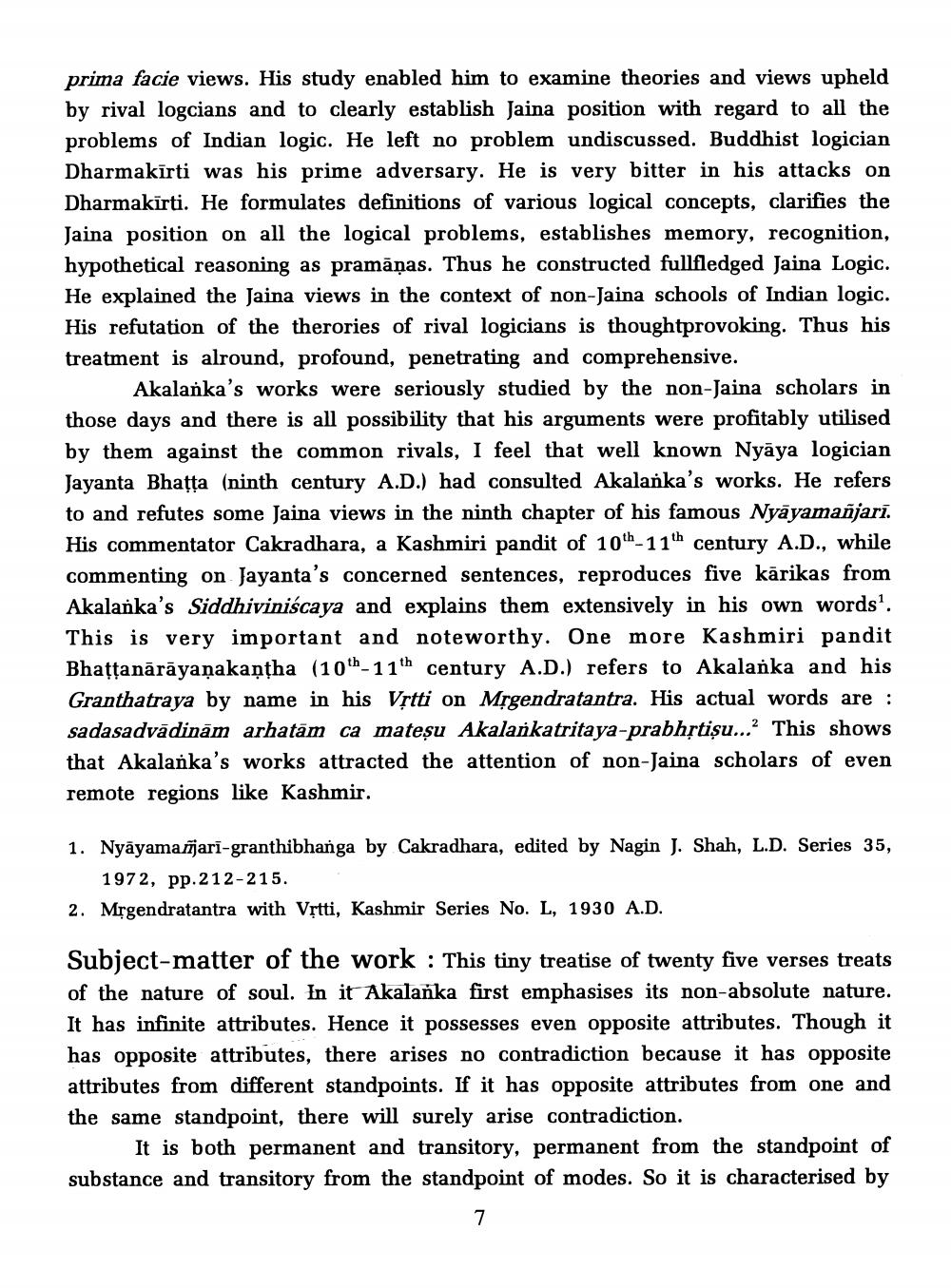________________
prima facie views. His study enabled him to examine theories and views upheld by rival logcians and to clearly establish Jaina position with regard to all the problems of Indian logic. He left no problem undiscussed. Buddhist logician Dharmakirti was his prime adversary. He is very bitter in his attacks on Dharmakirti. He formulates definitions of various logical concepts, clarifies the Jaina position on all the logical problems, establishes memory, recognition, hypothetical reasoning as pramāņas. Thus he constructed fullfledged Jaina Logic. He explained the Jaina views in the context of non-Jaina schools of Indian logic. His refutation of the therories of rival logicians is thoughtprovoking. Thus his treatment is alround, profound, penetrating and comprehensive.
Akalanka's works were seriously studied by the non-Jaina scholars in those days and there is all possibility that his arguments were profitably utilised by them against the common rivals, I feel that well known Nyaya logician Jayanta Bhaṭṭa (ninth century A.D.) had consulted Akalanka's works. He refers to and refutes some Jaina views in the ninth chapter of his famous Nyāyamañjarī. His commentator Cakradhara, a Kashmiri pandit of 10th-11th century A.D., while commenting on Jayanta's concerned sentences, reproduces five karikas from Akalanka's Siddhiviniscaya and explains them extensively in his own words1. This is very important and noteworthy. One more Kashmiri pandit Bhaṭṭanārāyaṇakantha (10th-11th century A.D.) refers to Akalanka and his Granthatraya by name in his Vrtti on Mrgendratantra. His actual words are sadasadvādinām arhatam ca mateṣu Akalankatritaya-prabhṛtisu..." This shows that Akalanka's works attracted the attention of non-Jaina scholars of even remote regions like Kashmir.
1. Nyayamañjarī-granthibhanga by Cakradhara, edited by Nagin J. Shah, L.D. Series 35, 1972, pp.212-215.
2. Mrgendratantra with Vṛtti, Kashmir Series No. L, 1930 A.D.
Subject-matter of the work: This tiny treatise of twenty five verses treats of the nature of soul. In it Akalanka first emphasises its non-absolute nature. It has infinite attributes. Hence it possesses even opposite attributes. Though it has opposite attributes, there arises no contradiction because it has opposite attributes from different standpoints. If it has opposite attributes from one and the same standpoint, there will surely arise contradiction.
It is both permanent and transitory, permanent from the standpoint of substance and transitory from the standpoint of modes. So it is characterised by
7




